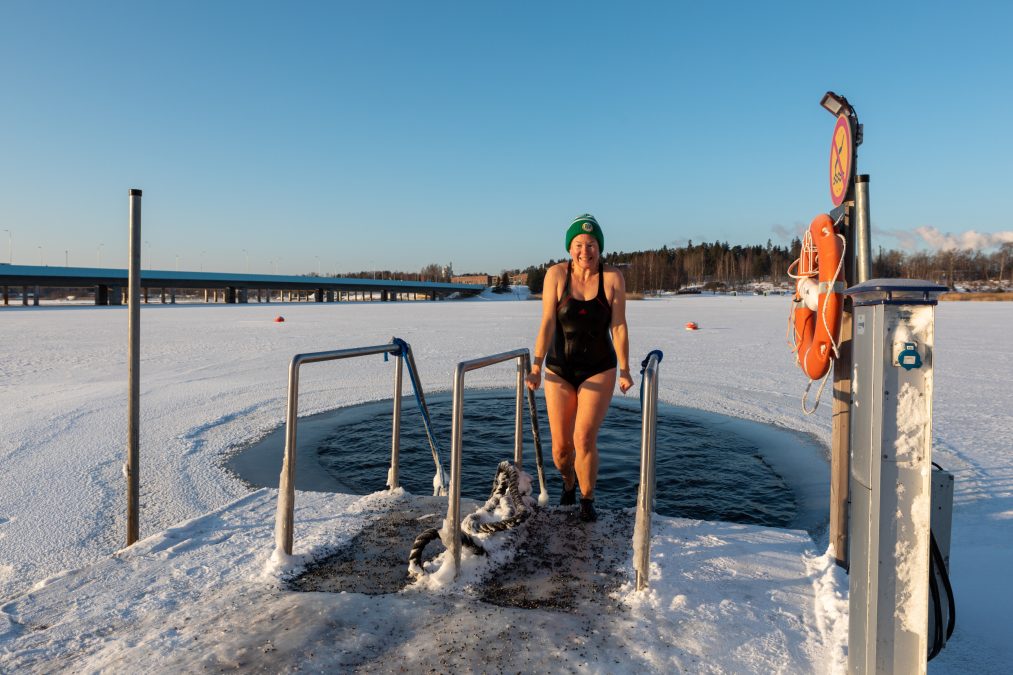Welfare plan

The welfare plan is used to manage, steer and develop the health and welfare promotion involving Helsinki residents. The plan helps ensure that operations are systematic, target-oriented, long-term and collaborative between various operators. The welfare plan is built by council term and its starting point is the city strategy and an analysis based on statistical and research data on the health and welfare of city residents and the safety of everyday life.
The City of Helsinki Welfare Plan 2022–2025 is one way to reduce health and welfare disparities of Helsinki residents, to contribute to improving the quality of life of Helsinki residents and to implement the ”A Place of Growth” city strategy of the council term. The contents of the welfare plan are based on the Act on Organising Healthcare and Social Welfare Services as well as the legislation on child welfare, elderly services and preventive substance abuse work.
Helsinki’s work to promote health and welfare is guided by a systematic and holistic approach, based on definitions of social quality and the UN’s Sustainable Development Goals. These focus on the quality-of-life experiences of city residents, with a focus on the physical, mental and social well-being of the individual and the healthiness and functionality of the living environment, including access to key services.
The welfare plan plays an important role in promoting the objectives of social sustainability, in particular health and welfare, reducing inequalities, sustainable cities and communities, and eradicating poverty. More indirectly, the plan supports many other UN goals.
The welfare plan is being implemented by all City of Helsinki divisions and the City Executive Office in cooperation with partners, such as organisations and educational institutions.
Six well-being plan priorities
The City of Helsinki Welfare Plan 2022–2025 has six priorities for promoting health and welfare: mental well-being, leisure and recreation, physical activity, healthy lifestyles, good relations and a safe and beautiful city.
1. Mental well-being
- The mental well-being of Helsinki residents is being strengthened by developing early support, low-threshold preventive services, access to help and the use of self-care services.
- Mental health service chains for children and young people, interaction skills for children and young people, youth work in schools and the work for the ‘Hyvän mielen kunta’ project are being developed.
2. Hobbies and leisure
- Volunteering, peer support activities and the promotion of arts and culture as a factor for well-being will be promoted across all age groups.
- Hobby- and Culture Kids activities, cultural work with the elderly and arts and cultural experiences in homes for the elderly will be developed.
- Helsinki’s model of cultural work will be implemented in the urban renewal areas and the development of the Finnish Model for Leisure Activities will continue.
3. Physical activity
- Work to promote mobility will be targeted at the least physically active Helsinki residents. Awareness of physical exercise opportunities for people of all ages, including during early childhood education, school and study days, will be raised.
- The functional capacity of the elderly will be strengthened through a mobility agreement and more guided physical activity.
- City employees will be encouraged to exercise regularly, and awareness of Helsinki’s sports and exercise opportunities will be raised among residents of all ages.
- Work on the Physical Activity Programme will continue.
4. Healthy lifestyles
- Healthier lifestyles will be promoted through nutrition education for professionals and the use of digital tools.
- Well-being cafés for children and young people will be organised, and the use of the Finger operating model for the elderly will be reinforced. Other memory-friendly developments will also be strengthened during the term of office of the council.
- Substance abuse prevention methods will be strengthened through measures targeted at different population groups and the ‘Intoxicants and Addictions in Families with Children’ service chain work will be developed.
5. Good community relations
- Interaction between population groups and individuals from different population groups will be increased and people’s sense of security and attitudes will be influenced.
- The pluralism of city residents and their equal opportunities to participate and exert influence will be strengthened and, for example in OmaStadi, the participation of groups identified as under-represented in previous rounds will be promoted at all stages of the process.
- Equality will be supported and strengthened through multi-channel communication, taking into account different population groups and districts.
- Solutions to undesirable phenomena such as radicalisation and gang activity in different parts of the city will be sought.
- The rights of children will be addressed through UNICEF’s Child-Friendly Municipality model.
- Employment for partially disabled people will be improved, as will digital skills.
6. A safe and beautiful city
- Safe everyday environments and a pleasant living environment will be promoted and efforts will be made to better identify and address safety challenges in different areas.
- By drawing up planning guidelines for pedestrian areas and improving pedestrian crossings, safe movement in urban areas will improve.
- The Percent for Art principle will give city residents the opportunity to experience and encounter art in their neighbourhoods.
- The increase in domestic violence will be tackled, and awareness about safety in the home and local living environments will be increased.
- Measures to support the well-being and safety of informal care families will be strengthened.
Measuring change in the well-being, health and safety of Helsinki residents
The welfare plan has 47 impact indicators to describe changes in the welfare, health and safety of the population. The realisation of the plan will be monitored with an annual welfare report – Helsinki Health and Welfare Barometer. Wider reporting (comprehensive well-being account) will be done at the end of the council term and its content, in addition to the information provided by the Urban Research and Statistics Unit, will always serve as the information base for the next council term’s welfare plan.